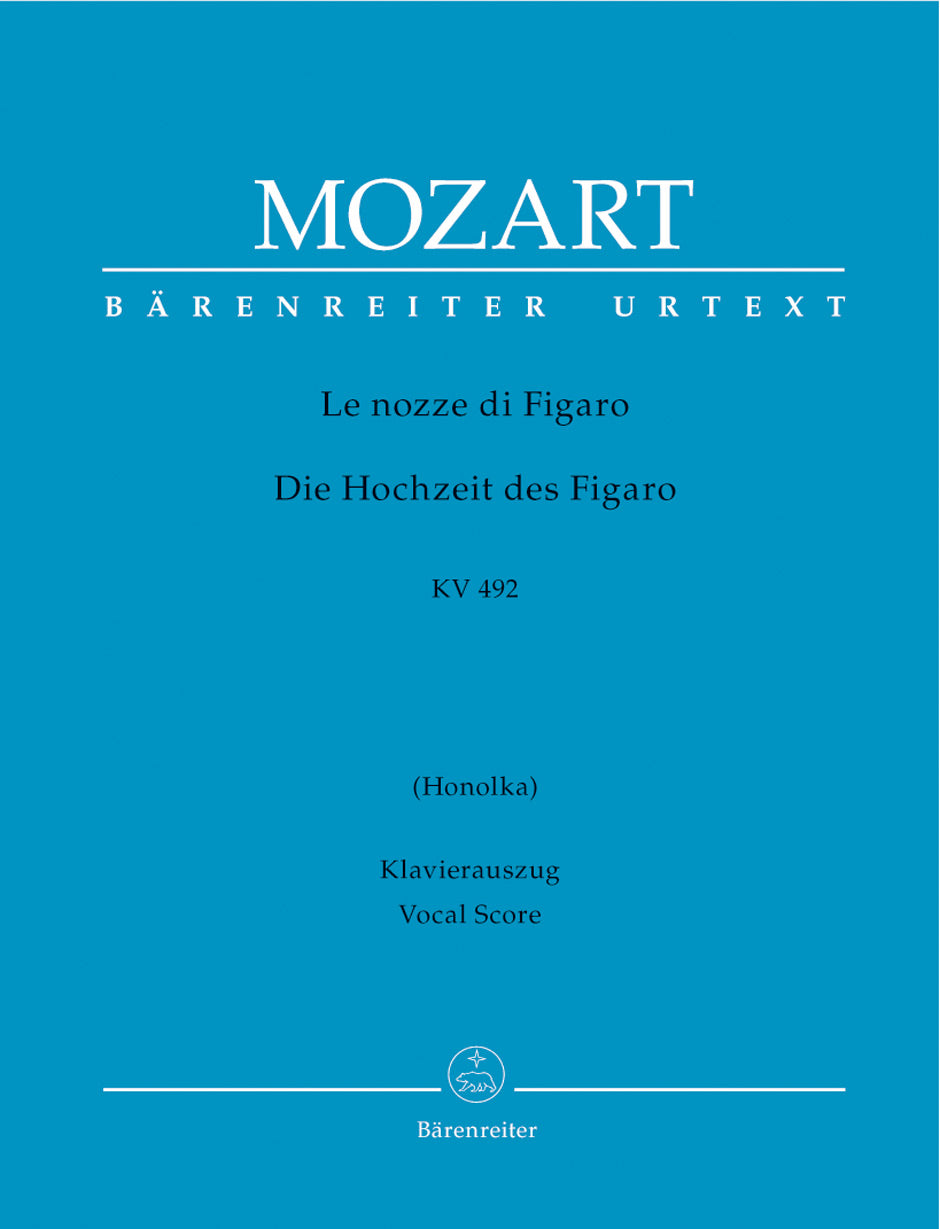

BARENREITER - 345062
Mozart The Marriage of Figaro K 492 - softcover (Translation: Honolka)
Composer: Wolfgang Amadeus Mozart
Publisher: Bärenreiter
Instrumentation: Voice
Format: Vocal Score
Binding: Paperback
Dimensions: 10.6 in x 7.5 in
Pages: 557
Mozart The Marriage of Figaro K 492 - softcover (Translation: Honolka)
Juilliard Store
144 West 66th Street
New York NY 10023
United States
Choose options
Mozart The Marriage of Figaro K 492 - softcover (Translation: Honolka)
Juilliard Store
144 West 66th Street
New York NY 10023
United States
Mozart The Marriage of Figaro K 492 - softcover (Translation: Honolka)
Juilliard Store
144 West 66th Street
New York NY 10023
United States
Editor: Finscher, Ludwig
Translation: Kurt Honolka
Arranger: Epplée, Eugen
Orchestral scoring : 5SSolo/2TSolo/4BSolo/Mixed choir/2Fl/2Ob/2clarinet/2bassoon/2Hn/2Trp/timpani/Str/Bc
Language(s) of work: I/D
Product format: vocal score, Urtext edition
Binding: Paperback
Pages / Format: XV, 557 - 27,0 x 19,0 cm
Due to numerous customer requests, Bärenreiter will be successively offering vocal scores to major Mozart operas in hardback editions again. Sturdier hardcover editions of important repertoire works are more likely to survive the rigours of a musicians's life.
Premièred at the Vienna Hoftheater on 1 May 1786, Wolfang Amadeus Mozart’s and Lorenzo Da Ponte’s Le nozze di Figaro may be safely regarded as one of the greatest operatic successes of all times. Yet its success was not entirely due to Mozart’s music: on the contrary, because of the extraordinary demands it placed on the orchestra (especially the woodwinds), the music even posed an obstacle to the work’s spread outside the German-speaking countries. At least equally responsible for the opera’s success was the librettist Lorenzo Da Ponte, who managed to transform a topical and socio-critical stage play into an opera libretto as effective as it is amusing.
This vocal score is based on Ludwig Finscher’s 1973 edition of ‘Le nozze di Figaro’ published in the ‘New Mozart Edition’ and the critical commentary by Ulrich Leisinger published in 2007.
Many of the sources for Mozart’s first opera from the Lorenzo Da Ponte trilogy only became available to scholars again after the ‘New Mozart Edition volume was published. These include the autograph scores of acts 3 and 4, now held at the Biblioteka Jagiello ka in Kraków, significant portions of the original sets of parts and acts 2 to 4 of the conductor’s copy from the first performance of 1786.
These original sources, now available again, offer compelling solutions to several previously unresolved questions.
